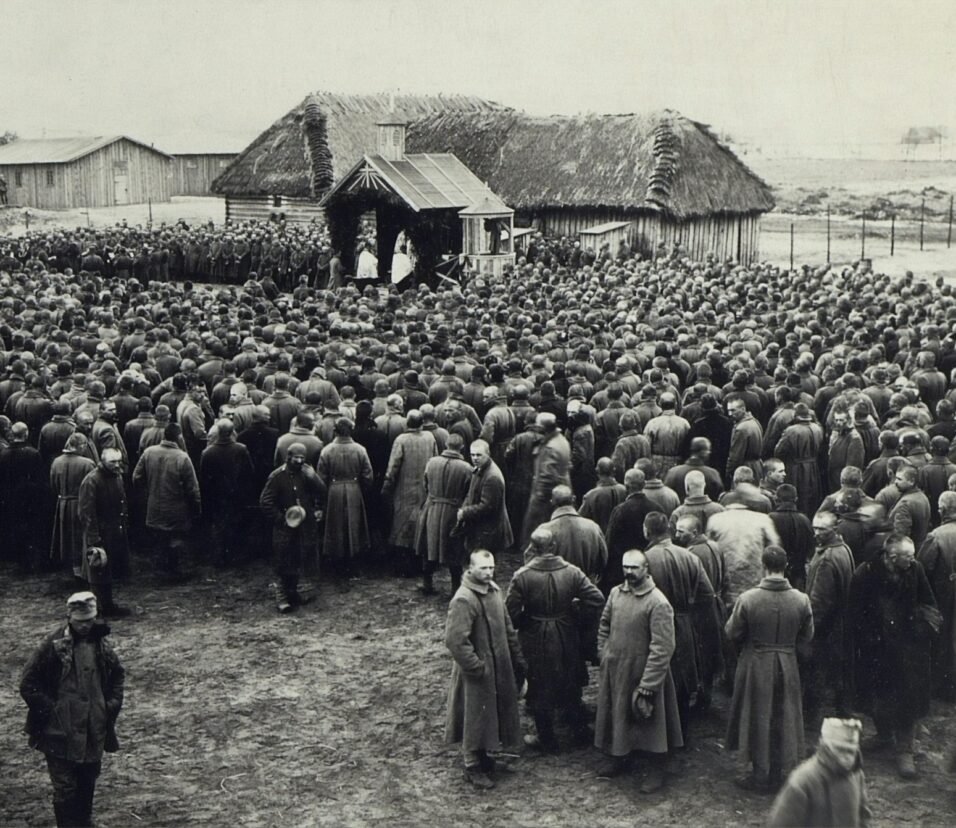Introduction
The cataclysmic events of World War I were not only shaped by political and social dynamics but also by rapid advancements in weaponry. The Great War, as it was often called, saw the dawn of many new weapons that changed the course of battles and left an indelible mark on the strategies of warfare.
The Machine Gun: A Rain of Bullets
- History & Development: Before World War I, machine guns like the Gatling were bulky and not particularly efficient. However, the Maxim gun’s invention, with its water-cooled barrel and ability to fire continuously, changed the dynamics of frontline combat.
- Operational Use: Often placed along the front lines, machine guns decimated infantry units. Troops charging across No Man’s Land were mowed down, rendering traditional tactics of assault ineffective.
- Legacy: The machine gun’s impact persisted, with its design being refined in subsequent wars. In many ways, it marked the beginning of an era where infantry would need armored protection to advance.
Tanks: Armored Behemoths on the Battlefield
- History & Development: Recognizing the challenges of trench warfare and machine gun dominance, the British developed tanks to overcome fortified positions.
- Operational Use: Early tanks were plagued with problems – they were slow, mechanically unreliable, and often became stuck. However, by the war’s end, they proved instrumental in breaching defensive lines.
- Legacy: WWI tanks paved the way for armored warfare, a tactic that would dominate battlefields in World War II and beyond.
Poison Gas: The Silent Killer
- History & Development: Chemical warfare had its dark inception in WWI. Initially, chlorine gas was used, which choked its victims. Later, mustard gas, which caused severe burns, was employed.
- Operational Use: Released from canisters or fired in shells, gas attacks created chaos and fear. Troops would scramble for gas masks, and those caught unprepared faced a horrific fate.
- Legacy: The widespread condemnation of gas warfare post-WWI led to international treaties banning its use. Nonetheless, the fear it instilled is a stark reminder of the lengths nations would go to for victory.
Aerial Warfare: The Skies Become a Battlefield
- History & Development: At the start of the war, planes were rudimentary and primarily used for reconnaissance. However, as the war progressed, the development of fighters and bombers changed the scope of warfare.
- Operational Use: Aerial dogfights became a common sight. Reconnaissance planes pinpointed enemy positions, bombers targeted infrastructure, and fighters clashed in the skies, attempting to gain aerial supremacy.
- Legacy: The use of aircraft in WWI set the stage for future air warfare. Modern air forces, with their multi-role fighters, strategic bombers, and stealth aircraft, owe their origins to the pioneering pilots and engineers of WWI.
Submarines: Shadows Beneath the Waves
- History & Development: While submarines existed before WWI, Germany’s U-boat fleet saw considerable action, revolutionizing naval combat.
- Operational Use: U-boats targeted both military and civilian shipping, trying to cut supply lines. The sinking of ships like the Lusitania showed that even civilians weren’t safe from the war’s reach.
- Legacy: The stealth and surprise tactics of U-boats highlighted the need for anti-submarine warfare techniques, many of which are still in use today.
Advanced Artillery: The Thunder of the Big Guns
- History & Development: Artillery had always been a warfare mainstay, but WWI saw significant advancements in caliber, accuracy, and firing mechanisms.
- Operational Use: Artillery barrages were used to soften enemy defenses before an infantry assault. With their extended range and power, these guns wreaked havoc on trenches, bunkers, and fortifications.
- Legacy: The importance of artillery in WWI solidified its role in subsequent conflicts. Even today, artillery remains a crucial component of any armed force, albeit with advanced targeting systems and mobility.
Flamethrowers
- Overview: Designed to instill fear and clear trenches, flamethrowers emitted a stream of burning fuel.
- Impact: Though not game-changing, their psychological impact on the battlefield was significant. They epitomized the brutal and close-quarters nature of trench warfare.
The Evolution of Infantry Weapons
- Rifles and Bayonets: The bolt-action rifles used by most armies were accurate and deadly over long distances. Paired with bayonets, they became versatile weapons for both shooting and close combat.
- Grenades: Hand grenades allowed infantry to target enemy trenches and clear bunkers, adding a short-range explosive capability to their arsenal.
- Legacy: The emphasis on individual soldier equipment in WWI led to the development of modern infantry tactics and gear, focusing on versatility and adaptability.
Conclusion
World War I was more than just a clash of global powers; it was a testing ground for new weapons that would shape warfare for the 20th century and beyond. The lessons learned, sometimes at great cost, have influenced military strategy, international policies, and even societal views on the nature of war.
By understanding the origins and impacts of these weapons, we gain insight not only into historical events but also into the evolving nature of conflict and humanity’s relentless pursuit of technological advancement, even in the realm of destruction.
The innovations in weaponry during World War I marked a significant departure from previous conflicts. While they brought about tactical and strategic transformations, they also underscored the devastating human cost of modern warfare.







